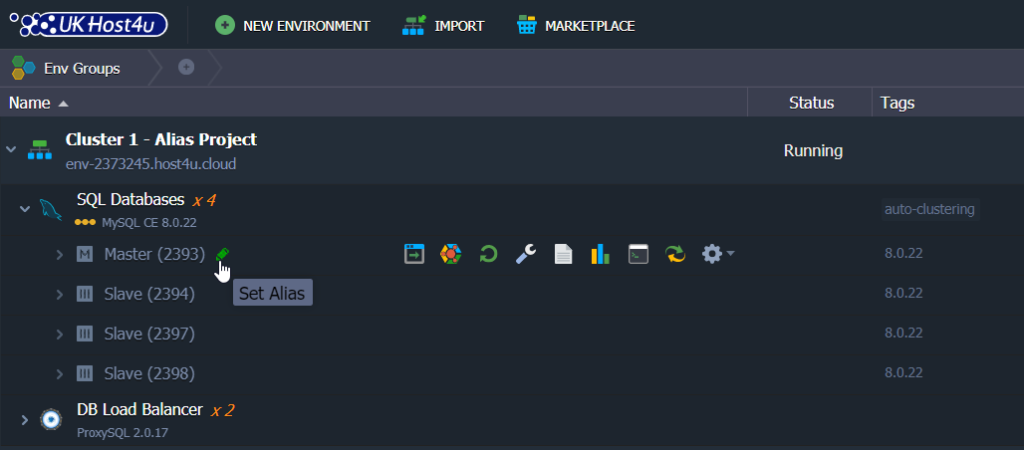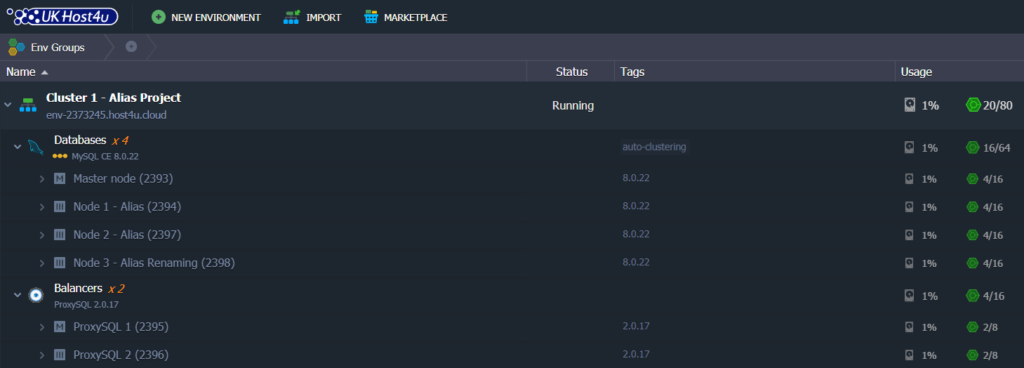Search Knowledge Base by Keyword
How To Setup Environment And Nodes Aliases
What are Environment Aliases
An environment alias is an alternative name given to your environment. Specifying aliases for your environments or separate nodes can greatly ease their management.
It can clarify which item you are working with. Doing so, this will avoid making a mistake while choosing an environment or a node that needs to be adjusted.
You will find this very useful while working with several nodes of the same type when scaling horizontally your environment for example.
We will take here below the example of setting up aliases for the master and slave nodes in a DB cluster.
How to set up environments and nodes aliases?
1. Select your environment of same-type nodes and expand the instances list by clicking on the arrow icon or simply on the section.

2. Clicking on the Set Alias pencil icon, you can label the whole environment.
PLEASE NOTE: the domain name will remain the same.

Whatever the alternative name you add, the value will be automatically saved accordingly.

3. In the same way, you can choose the node you would like to add the label for and click on the Set Alias icon or simply double-click on the Node ID: xxx to set an alias.

Once done, press Enter to confirm the value for your alias.

Where do the Aliases appear?
The alternative names chosen for your environments and the nodes appear:
- In your dashboard

- In your Databases configuration panel.

- In the embedded Web SSH client:

PLEASE NOTE: these aliases stay visible for other collaborators and will remain attached after an environment is cloned, transferred, etc.
If you delete the alias name, this will return the default value automatically.
